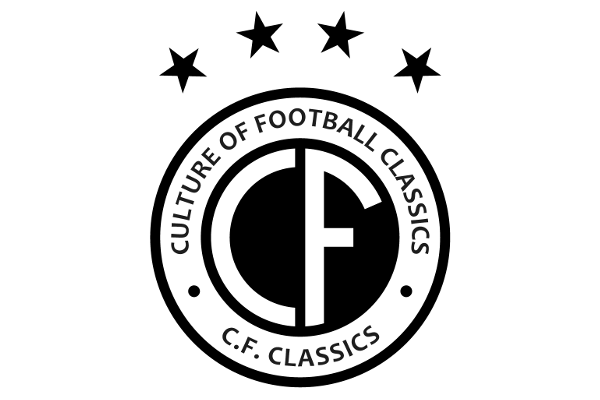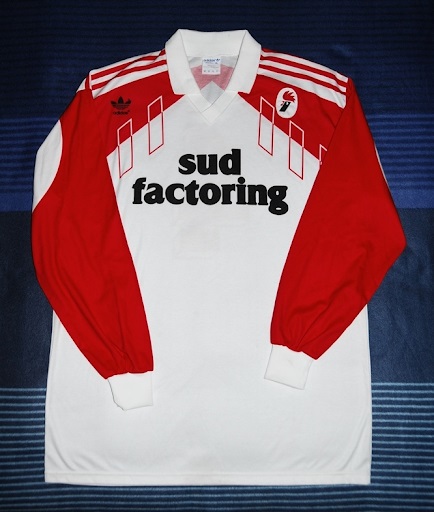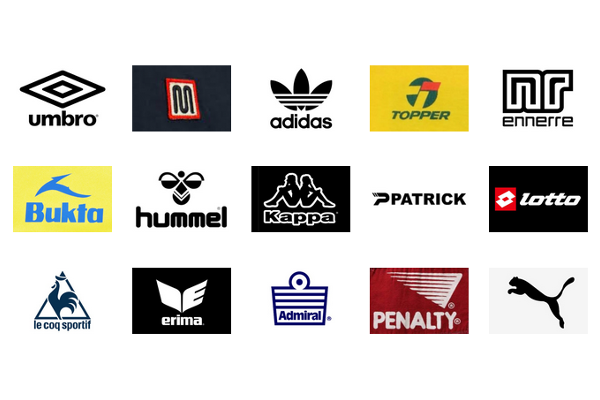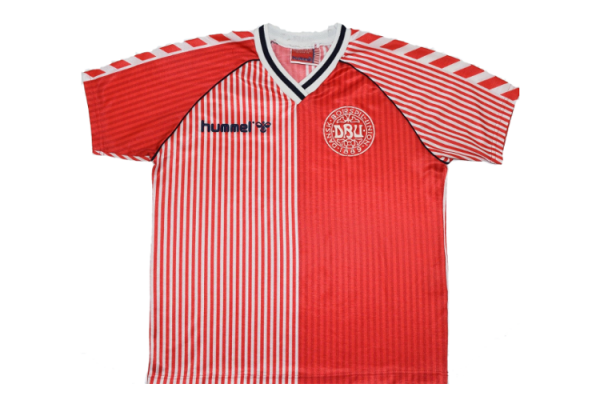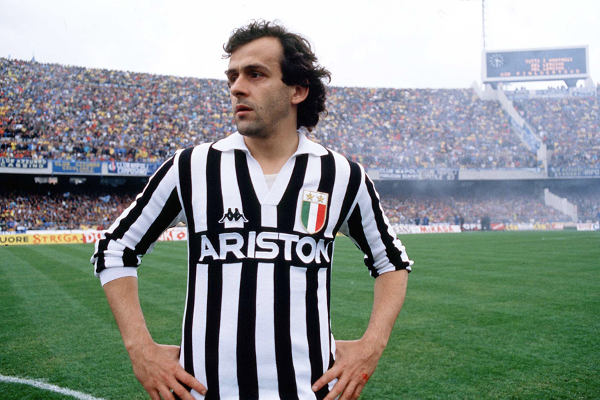Top Ten adidas Shirts
A self-confessed adidas addict and 80s nostalgist, James Williamson (@TheTrefoilMan) has been upsetting his fiancee with an ever expanding football shirt collection for many years. Here, he outlines his top ten adidas offerings and the reasons why those designs are so appealing.
What makes a great football shirt? Is it the design, the colour, the players who wore it, the moments it is synonymous with or the hit of nostalgia it serves up? The truth is usually a mixture of all of these with a slight weighting towards one or the other.
My fascination with shirts from the late 1970s, 1980s and early 1990s is borne of a sense of rareness and exoticism. In the pre-internet days, when wall-to-wall Sky TV coverage was years away, foreign shirts represented the unknown. Scarcely available to buy on the high street, they had strange, exotic sponsors, weird colour combinations and zany designs. They were also worn by unpronounceable, mythical players; some of whom you would only see once every four years when the World Cup was televised.
When English teams were allowed back into European competition post-Heysel, I was fascinated by Manchester United's televised run to the 1991 Cup Winners Cup final. The reason? United's opponents in the quarter final were Montpellier, who not only boasted an unusual orange, white and blue ‘military medals' adidas kit, they also had the candy floss-haired Colombian crafter Carlos Valderrama.
Montpellier were not the exception to the rule either. adidas' monopoly on the European sporting goods market and their network of manufacturing centres across the continent made them a popular kit provider.
And while the German label undoubtedly continued to produce brilliant designs beyond the early 1990s, the relative accessibility, availability and familiarity of these shirts relieves them of a certain X factor in my opinion.
Many will understandably disagree, but the beauty about shirt collecting is the sheer spectrum of opinions.
No.1 SC Bastia 1978 home shirt
Worn by the Corsicans as they powered their way to an unlikely UEFA Cup final, fuelled by the goals of Abdelkrim Merry ‘Krimau' and the creative genius of Claude Papi. From its plain trefoil logo and sewn on stripes to its shiny nylon/acetate blend and thick white collar and cuffs, this is the absolute peak of adidas football shirt design for me. The large, striking crest is the tête-de-Maure (Moor's head), which is the emblem of the island of Corsica.
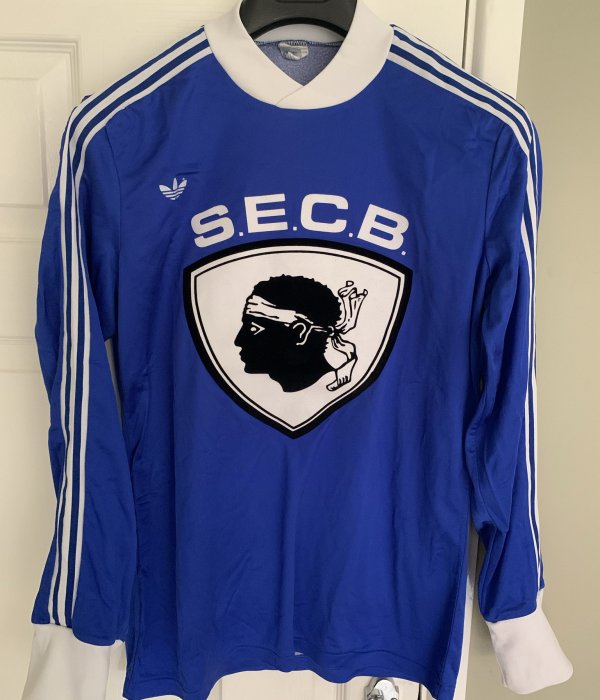
SC Bastia 1978 home shirt.
Image credit: @TheTrefoilMan
No.2 FC Bayern Munich 1985/88 away shirt
Worn just four times - twice in the 1985/86 and twice in the 1987/88 seasons. This shirt is an excellent example of one of the 1980s best adidas templates, the ‘Chelsea', which was also worn by Portugal and the Soviet Union. The thin diagonal blue and red pinstripes contrast nicely with the crisp white base layer of the shirt. Pictured is the domestic version, which contains both the Commodore writing and wordmark. European editions couldn't feature both due to strict advertising rules (Dynamo Kiev were also briefly sponsored by Commodore and dropped the wordmark). The reverse home red version was worn at the Olympiastadion against Everton, when Howard Kendall's men ground out a vital goalless draw en route to winning the 1985 Cup Winners Cup.
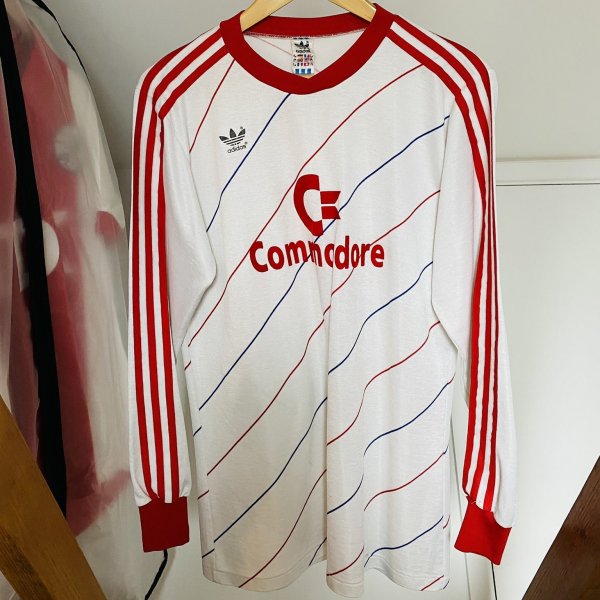
Bayern Munich 1985/88 away shirt.
Image credit: @TheTrefoilMan
No.3 Soviet Union Euro ‘88 home shirt
For me, the best version of the celebrated ‘Ipswich' template, also famously worn by the Netherlands and West Germany and perhaps less famously by East Germany, Morocco, Porto, Dortmund and a few others. The aesthetic appeal of this template lies in its geometrically pleasing pattern of progressively shaded tiles. Unlike the more celebrated Netherlands version, this one also has a collar. The eye-catching crest contains a red star to represent the communist party and a crossed hammer and sickle to denote the state-enforced alliance of industrial and agricultural workers. The large CCCP emblazoned across is the Cyrillic alphabet acronym for the Union of Soviet Socialist republics. It was also worn for the successful Italia 90 qualifying campaign.
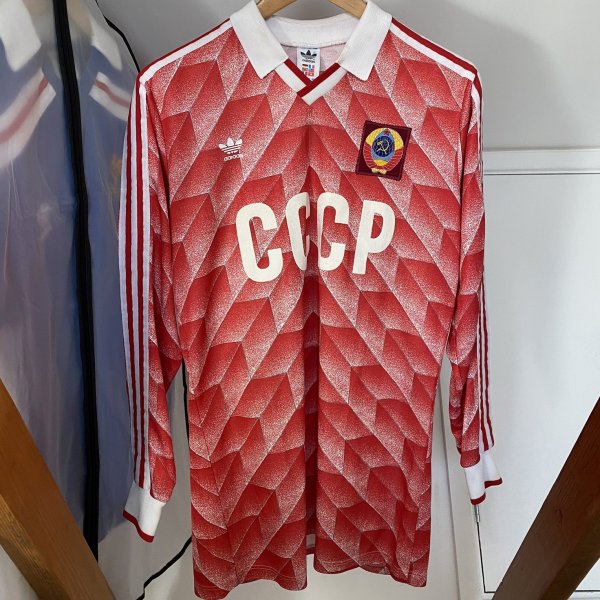
Soviet Union Euro ‘88 home shirt.
Image credit: @TheTrefoilMan
No.4 Belgium Euro ‘84 home shirt
This shirt was worn for Euro 84 and is unique in that no other country ever used the template, which was re-adopted by Belgium for the 2018 World Cup. The design features an argyle pattern with flag colours emblazoned across middle and is a clear nod to Ivan Lendl's tennis wear of the same era. A peculiar quirk on lots of Belgium adidas shirts of this era is the trefoil location on the left hand side of the chest. Despite boasting a talented generation of players, including Jan Ceulemans, Lei Clijsters, Franky Vercauteren and young prodigy Enzo Scifo, the red devils were dumped out of the group stages.

Belgium striker Nico Claesen in the Euro ‘84 home shirt.
No.5 Bari 1990/91 home shirt
One of the best examples of the aforementioned ‘military medals' template, this shirt was actually debuted by the United Arab Emirates at Italia 90. It was supposed to be worn by France in a unique three colour scheme at the tournament, but they failed to qualify. The Bari version, worn the season after the tournament, has enough small details to edge out its international brothers. Firstly, the fantastic cartoon-like cockerel crest and secondly, the shirt's association with the golden period of Serie A. The sponsor - a local based accounting firm - also offsets the design nicely without being intrusive.
No.6 Boca Juniors 1981/82 home shirt
You know a shirt is iconic when its design becomes symbolic of a team - see also Ajax, Milan, Juventus and PSG with their Hechter stripe. It also helps that it was worn by perhaps the most iconic footballer of all time during his more formative (and slimmer) years. Everything about it just screams cool, from the unusual four star crest to the understated design with horizontal chest band and stripes running all along the arm. The bold colour scheme comes from the working class docks area of Buenos Aires. The story goes that, when the team needed new colours, the players agreed to choose colours of the first ship to enter the port, which ended up sporting a Swedish flag.
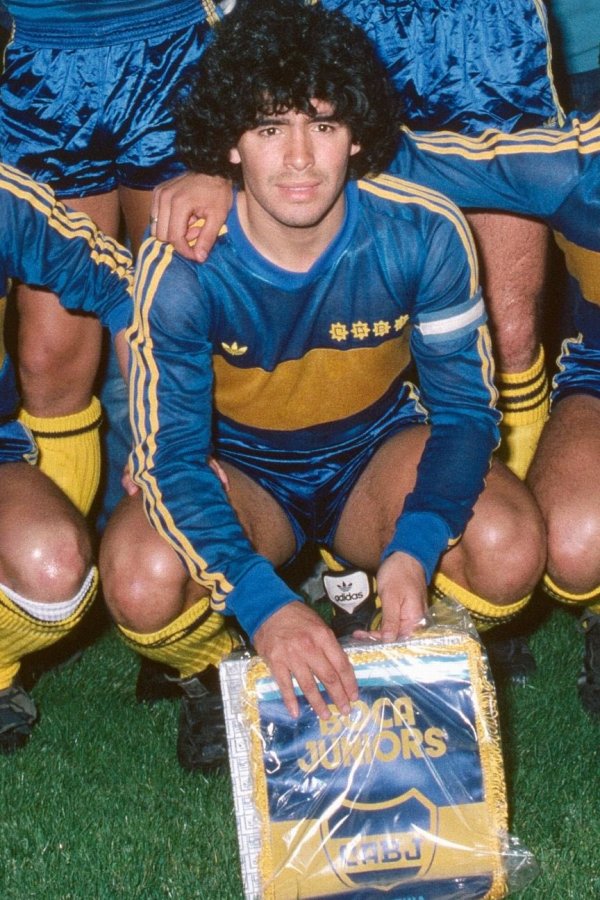
Boca Juniors legend Diego Maradona in the 1981/82 home shirt.
No.7 Iraq 1986 World Cup shirts - Mexico 1986.
The wavy sublimated stripe pattern was worn by the Iraqis as they made their World Cup debut. The yellow and blue colours have never been used by the nation since and the name written on the shirt was an unusual trend at that tournament, also adopted by Canada, Mexico and the Soviets. The engaging central crest is the Eagle of Saladin, an iconic symbol of Arab nationalism following the Egyptian Revolution of 1952. Although a great design, the shirt carries with it a dark political association as the team arrived in Mexico carrying the burden of expectation from Head of the Olympic Committee, Uday Hussein (Saddam's son). A brutal man, he was known to use beatings, mock executions and torture to ‘motivate' international players to perform well on the World stage.
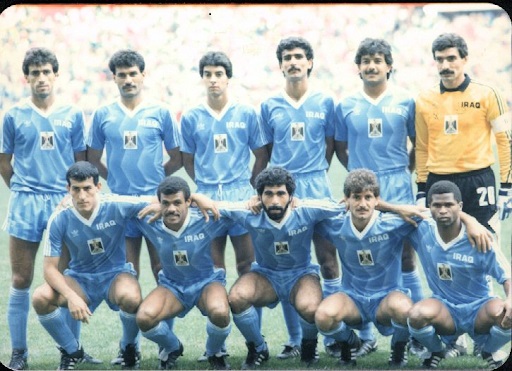
1986 adidas Iraq Shirt.
No.8 France home World Cup shirt - Spain 1982.
You could realistically replace this with any of France's home shirts from this decade as they're all gorgeous, especially the Euro 84 offering. The huge crest, subtle pinstripe and white collar, a design also worn by the Hungarians at the same tournament, give this one the edge however. It's also associated with one of THE iconic World Cup moments/matches - the Patrick Battiston/Toni Schumacher incident. The surly, shoulder-shrugging Gallic flair exemplified by the likes of Platini, Rocheteau and Bossis, also helps cement this shirt's status as one of the best.
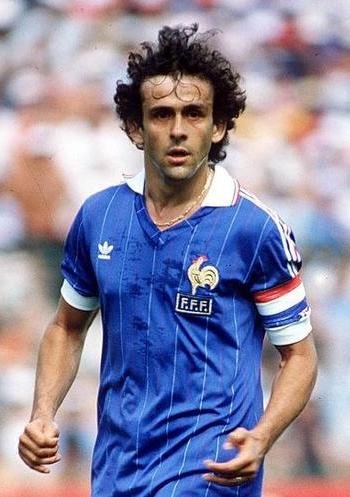
French playmaker Michel Platini in the 1982 World Cup shirt
No.9 Germany 1991 away shirt
The more widely recognised home version is rightly lauded as one of the greatest ever football shirts, especially when it comes to compilations and top tens. However, this rarer away version, worn only once in the unified Germany's first encounter with England since 1938, just edges it for me. Even ignoring its rarity, the shirt's iconic black, red and gold ribbon feels more subtle when set against the traditional Teutonic away colours. There are some interesting theories as to why this shirt was produced as a one off. The most believable one is that the unified Germany wanted to move away from the Ipswich template, worn by the DDR team and thus associated with a divided nation and communism.
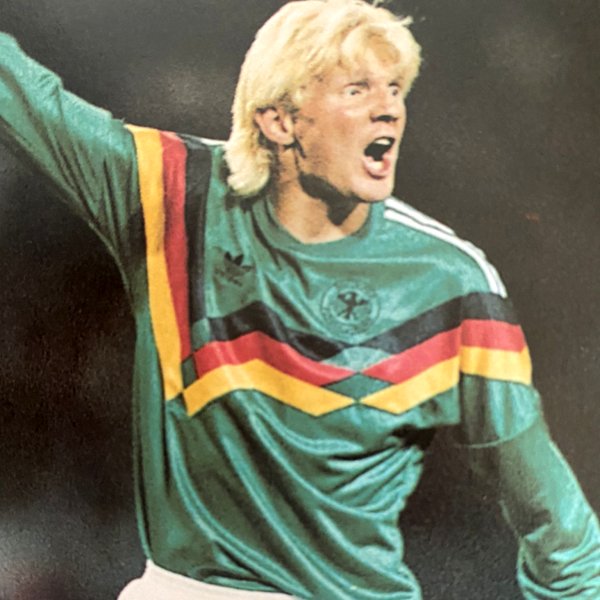
German midfielder Stefan Effenberg in the 1991 away shirt.
No.10 Yugoslavia 1990 home/away shirts
If historical/political context floats your boat then this shirt has it in spades. Debuted at Italia 90, it was the last design ever worn by the Socialist Federal Republic of Yugoslavia in a 2-0 friendly defeat against the Netherlands in March 1992. The unusual design is also best associated with the famous golden generation of Yugoslav players - Stojkovic, Mihajlovic, Jugovic, Suker, Boksic, Jarni, Prosinecki, Savicevic and many others - for whom politics and war would deny a chance to develop and compete for honours as one team. It shouldn't work, but it does, with the jagged lines, red detailing and subtle pinstripe layer combining fantastically for both versions. The eye-catching logo features the six torches burning as one flame, representing the brotherhood and unity of the six federal republics of Yugoslavia.
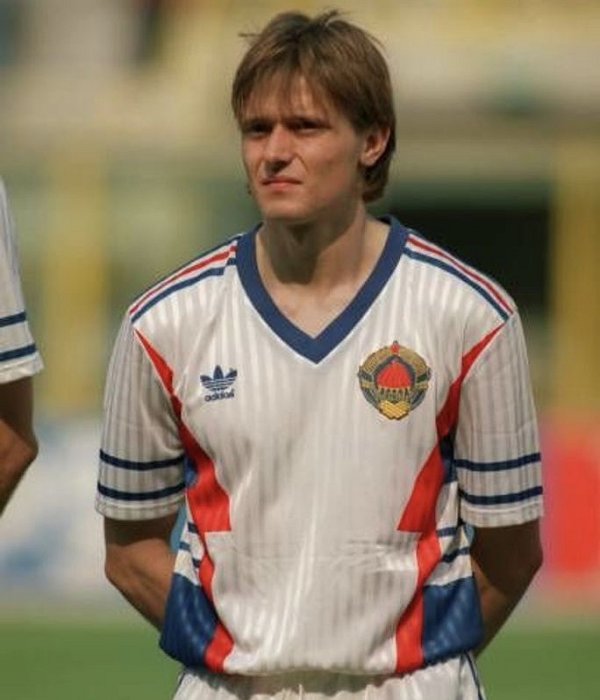
Yugoslavia 1990 home/away shirts.
You can find James Williamson (@TheTrefoilMan) on the following social media platforms:
- Twitter - @TheTrefoilMan
- Insta - @thetrefoilman
Tweet
